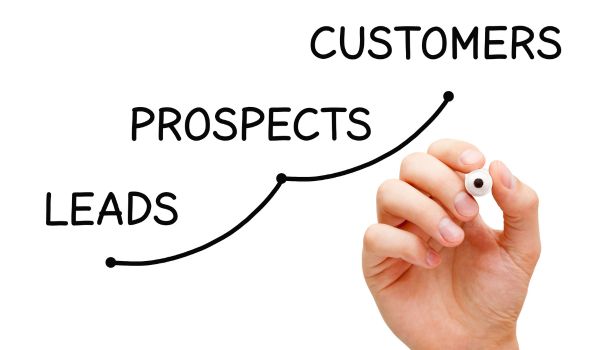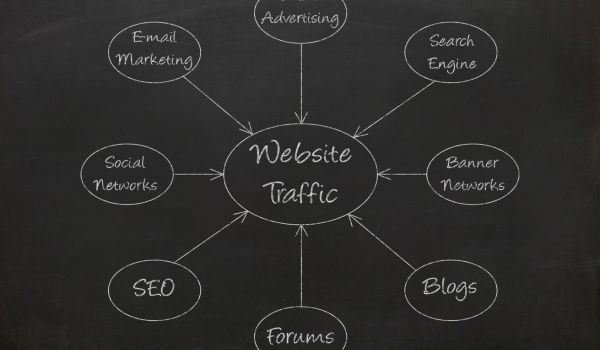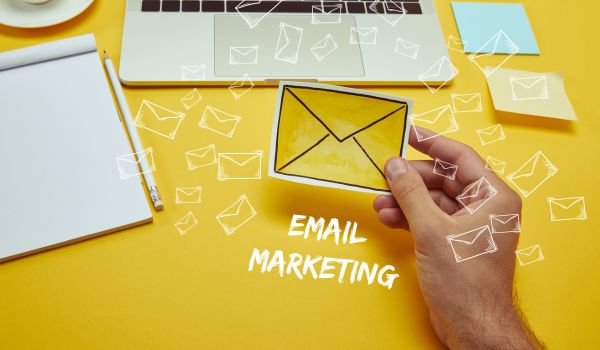In today’s digital landscape, lead generation has become essential for businesses to thrive and stay ahead of the curve. As we look towards 2024, it’s crucial for companies to future-proof their lead generation strategies to ensure long-term success. Whether you’re a small startup or a well-established industry player, mastering lead generation is the key to sustained growth.
In this article, we will explore five powerful strategies that will give your business a competitive edge in the ever-evolving world of lead generation. From leveraging data-driven insights to harnessing the power of artificial intelligence, we will delve into the innovative techniques that will drive qualified leads to your doorstep.
By embracing these strategies, you can anticipate and adapt to the changing needs and preferences of your target audience, ultimately converting more leads into paying customers. Don’t get left behind; equip your business with the knowledge and tools it needs to thrive in the lead generation landscape of 2024. Get ready to revolutionize your approach and future-proof your business today.
The importance of lead generation in the digital age

Lead generation has always been a critical aspect of business growth, but in today’s digital age, it has become more important than ever. With the proliferation of online platforms and the abundance of information available to consumers, businesses need to proactively reach out to their target audience and capture their attention.
In the past, traditional marketing methods such as print advertisements and cold calling were the primary means of generating leads. However, these methods have become less effective in an increasingly digital world. Today, consumers have the power to research products and services on their own terms, making it essential for businesses to be present in the places where their target audience is actively seeking information.
Understanding the lead generation process

Before diving into the strategies, it’s essential to have a clear understanding of the lead generation process. Lead generation involves attracting and capturing the interest of potential customers, nurturing them, and guiding them through the sales funnel until they are ready to make a purchase.
The process typically begins with identifying your target audience and understanding their pain points and needs. By conducting thorough market research and leveraging data-driven insights, you can create buyer personas that represent your ideal customers.
Once you have a clear picture of your target audience, the next step is to create valuable and targeted content that addresses their specific needs. This content can take the form of blog posts, whitepapers, videos, or any other format that resonates with your audience.
Key trends and changes in lead generation for 2024

As we look ahead to 2024, it’s essential to stay updated on the latest trends and changes in lead generation. The digital landscape is constantly evolving, and what worked yesterday may not work tomorrow. Here are some key trends and changes to watch out for:
– Personalization: Consumers today expect personalized experiences. By tailoring your lead generation efforts to individual preferences and needs, you can build stronger relationships and drive higher conversion rates.
– Artificial Intelligence: AI-powered tools can help automate and streamline lead generation processes, making them more efficient and effective. From chatbots that engage with website visitors to predictive analytics that identify high-quality leads, AI is transforming the lead generation landscape.
– Voice Search: With the rise of smart speakers and voice assistants, optimizing your content for voice search is becoming increasingly important. By understanding how people search using voice commands, you can optimize your website and content to capture those leads.
Strategy 1: Creating valuable and targeted content

Content is the backbone of any successful lead generation strategy. By creating valuable and targeted content, you can attract and engage your target audience, positioning your business as a trusted authority in your industry. Here are some key steps to effectively create content that drives leads:
1. Understand Your Target Audience: Before creating content, it’s crucial to have a deep understanding of your target audience. What are their pain points? What challenges do they face? By answering these questions, you can create content that resonates with their needs and interests.
2. Research Keywords: Keyword research is essential for optimizing your content for search engines. By identifying the keywords and phrases that your target audience is searching for, you can create content that ranks higher in search engine results pages (SERPs), driving more organic traffic to your website.
3. Provide Value: Your content should provide value to your audience. Whether it’s in the form of educational blog posts, informative videos, or comprehensive guides, make sure your content addresses their pain points and offers practical solutions.
Strategy 2: Optimizing your website for lead generation

Your website is often the first point of contact between your business and potential leads. It’s crucial to optimize your website to maximize lead generation potential. Start by ensuring that your website is user-friendly and easy to navigate. A cluttered and confusing website will discourage visitors from taking action.
Implement clear and compelling calls-to-action (CTAs) throughout your website. Whether it’s a sign-up form, a free trial offer, or a downloadable resource, make it easy for visitors to take the next step in the conversion process. Use persuasive language and visually appealing design to capture their attention and entice them to provide their contact information.
Consider implementing live chat functionality on your website. This allows visitors to engage with your team in real-time, providing an opportunity to address their questions and concerns immediately. It also allows you to collect valuable information about your leads, such as their pain points and preferences, which can inform your lead nurturing efforts.
Lastly, don’t forget to optimize your website for search engines. Conduct keyword research to identify the terms and phrases your target audience is searching for. Incorporate these keywords into your website’s content, meta tags, and URLs to increase your visibility in search engine results. A well-optimized website will attract organic traffic and generate more high-quality leads.
Strategy 3: Leveraging social media for lead generation

Social media has revolutionized the way businesses connect with their target audience. To future-proof your lead generation strategies, it’s crucial to leverage the power of social media platforms. Start by identifying the channels where your target audience is most active. Whether it’s Facebook, Instagram, LinkedIn, or Twitter, focus your efforts on the platforms that will yield the best results.
Create a compelling social media presence that reflects your brand’s personality and values. Share valuable content that educates, entertains, and inspires your audience. Encourage engagement by asking questions, running contests, and hosting live events. The more you can foster a sense of community and build trust, the more likely your social media followers will convert into leads.
Use social media advertising to reach a wider audience and target your ideal customers. Platforms like Facebook and LinkedIn offer powerful targeting options that allow you to segment your audience based on demographics, interests, and behaviors. By delivering highly relevant ads to the right people, you can generate leads that are more likely to convert into paying customers.
Remember to track and analyze the performance of your social media campaigns. Pay attention to metrics like click-through rates, engagement rates, and conversion rates. Use this data to optimize your campaigns and make data-driven decisions that will drive even better results in the future.
Strategy 4: Implementing email marketing campaigns

Email marketing continues to be one of the most effective lead generation strategies. It allows you to nurture leads, build relationships, and ultimately convert them into customers. To future-proof your email marketing campaigns, focus on personalization and automation.
Segment your email list based on relevant criteria, such as demographics, behavior, or purchase history. This allows you to send targeted emails that are tailored to the specific needs and interests of each segment. Personalize your emails by using the recipient’s name, referencing their past interactions with your brand, and offering relevant content or promotions.
Automate your email campaigns to save time and ensure consistent communication with your leads. Set up automated workflows that trigger emails based on specific actions or events. For example, you can send a welcome email to new subscribers, a series of nurturing emails to leads in the consideration stage, and a promotional email to leads who have expressed interest in a specific product or service.
Experiment with different types of emails, such as newsletters, product updates, educational content, and exclusive offers. Monitor the performance of your email campaigns, paying attention to metrics like open rates, click-through rates, and conversion rates. Use this data to refine your email marketing strategies and optimize your lead generation efforts.
Strategy 5: Utilizing paid advertising for lead generation

Paid advertising is a powerful tool for generating leads and increasing brand visibility. To future-proof your paid advertising strategies, focus on targeting, relevance, and optimization. Start by defining your target audience and selecting the advertising platforms that will reach them most effectively.
Whether it’s search engine advertising, display advertising, or social media advertising, make sure your ads are highly relevant to your target audience. Craft compelling ad copy that speaks directly to their pain points and offers a solution. Use eye-catching visuals and strong calls-to-action to capture their attention and entice them to click.
Optimize your ads based on performance data. Monitor metrics like click-through rates, conversion rates, and cost per lead. Test different ad variations, targeting options, and landing page designs to identify what works best for your audience. Continuously refine your campaigns based on data-driven insights to achieve better results and generate more high-quality leads.
Measuring and analyzing lead generation success

To future-proof your lead generation strategies, it’s crucial to continually measure and analyze the success of your efforts. By monitoring key performance indicators (KPIs) and analyzing data, you can make data-driven decisions and optimize your lead generation strategies.
1. Defining relevant KPIs: Identify the KPIs that are most relevant to your business goals and track them consistently. Some examples of lead generation KPIs include conversion rates, cost per lead, and customer acquisition cost.
2. A/B testing: Conduct A/B tests to experiment with different marketing messages, offers, and landing page designs. By comparing the performance of different variations, you can identify the most effective strategies and optimize your lead generation campaigns.
3. Continuous improvement: Regularly review and analyze your lead generation data to identify areas for improvement. Use the insights gained to refine your strategies, test new approaches, and stay ahead of the competition.
By measuring and analyzing lead generation success, you can identify opportunities for improvement, optimize your strategies, and ensure that your business remains competitive in the ever-changing landscape of lead generation.
Future-proofing your business with effective lead generation strategies

As we look towards 2024, it’s clear that mastering lead generation is essential for businesses to thrive and stay ahead of the competition. By leveraging data-driven insights, harnessing the power of artificial intelligence, embracing omnichannel marketing, building trust through social proof, and continually measuring and analyzing lead generation success, you can future-proof your business and ensure long-term success. Don’t wait until it’s too late. Start implementing these strategies today and revolutionize your approach to lead generation. By staying ahead of the curve, anticipating customer needs, and delivering personalized experiences, you can drive qualified leads to your doorstep and convert them into loyal, paying customers. Future-proof your business and secure your place in the lead generation landscape of 2024. The time to act is now.



